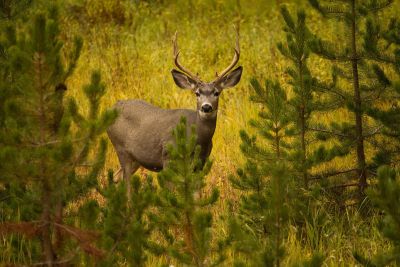With some proven planting techniques; however, gardeners may be able to reduce the occurrence of damage caused by deer. Planting deer resistant evergreen plants, for example, can help to create a beautiful green space all year long.
Choosing Evergreens Deer Won’t Eat
When planning a garden filled with deer proof evergreens, it is important to remember that there will always be an exception. Despite choosing deer proof evergreens for planting, these animals are known to feed on a wide range of plants during times of need. While planting evergreens deer don’t like will be effective in most cases, they may still be damaged on occasion. The maturity of the plant will also attribute to its resistance to deer. Deer are much more likely to feed on small sapling evergreen plants. When adding new plantings, gardeners may need to provide additional protection until the plants have become well established. When choosing deer proof evergreens, one of the most important aspects to consider is the texture of the stems and leaves. In general, deer are more likely to avoid plants that are unpleasant. This includes evergreens that have toxic parts, sharp leaves, or strong odors.
Popular Deer Proof Evergreens
Green Giant aborvitae – Popular in landscape plantings, these evergreen trees are especially prized for their ability to offer privacy in residential settings. Like many types of arborvitae, Green Giant is also easy to grow.
Leyland cypress – Fast growing, leyland cypress can easily enhance privacy. This evergreen tree adds visual interest through its soft blue-green color.
Boxwood – Ranging in size, boxwoods are a great option to establishing hedges and flower bed borders.
Evergreen barberry – Beloved non-invasive species of barberry, the evergreen type produces a beautiful ornamental display in fall landscapes.
Holly – Coming in a wide range of sizes, prickly holly leaves are especially unappetizing to deer.
Wax myrtle – Similar to boxwood, these evergreen plants work well when planted as hedges. Wax myrtle may be better adapted to United States growing regions.
